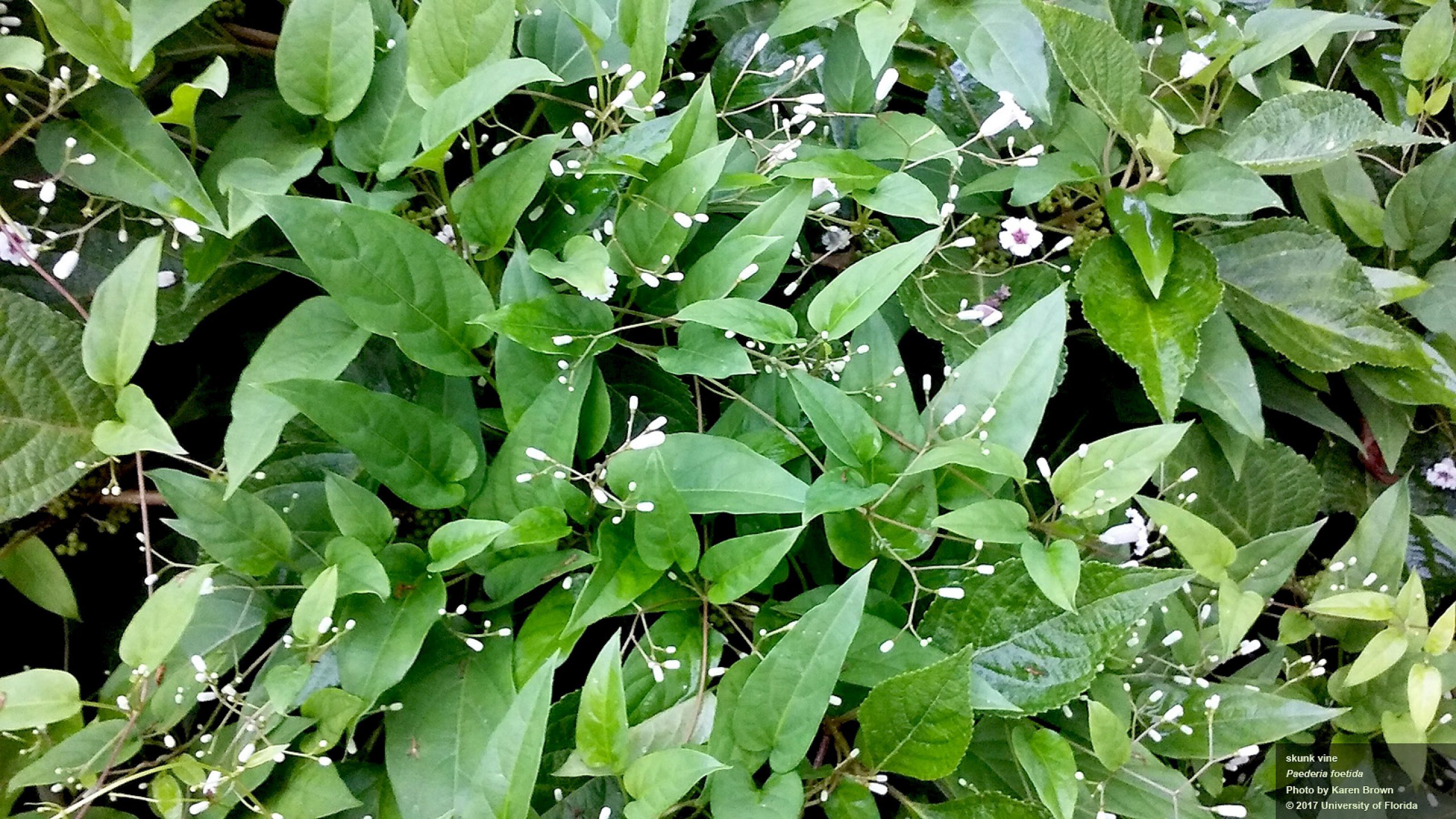EDRR Invasive Species
Skunk Vine (Paederia foetida)

Photo: University of Florida
Define Invasive Species: must have ALL of the following –
- Is non-native to the area, in our case northwest Florida
- Introduced by humans, whether intentional or accidental
- Causing either an environmental or economic problem, possibly both
Define EDRR Species: Early Detection Rapid Response. These are species that are either –
- Not currently in the area, in our case the Six Rivers CISMA, but a potential threat
- In the area but in small numbers and could be eradicated
Native Range:
Eastern and southern Asia.
Introduction:
Around 1897 Skunk vine was introduced into Hernando County Florida as a possible fiber crop. It escaped cultivation and began to spread across central and north Florida.
EDDMapS currently list 1,252 records of skunk vine in the United States. Most are in central Florida but there are records in south and north Florida, as well as Louisiana, Texas, Georgia, South and North Carolina.
There 17 records in the Florida panhandle and 1 within the Six Rivers CISMA, that being in Santa Rosa County in the Blackwater State Forest.
Description:
This is a woody vine that can grow up to 30 feet. The vines are known to climb into the trees or grow along the ground. When crushed, the plant emits a foul odor, hence its name, and can be used to positively identify it. The leaves vary in shape but usually are heart shaped at the base, pointed at the tips, and have smooth margins. The flowers are small, light grayish pink in color, with red centers. The fruits are small and shiny brown. It can spread vegetatively or by seed.
Issues and Impacts:
This plant can survive in a variety of habitats including dense hardwood forest, pine forest, sandhills, floodplain forest, and marshes. Like kudzu and other vines, this plant will overgrow native plants on the ground and over trees. It can fill a tree canopy causing the collapse of it. It is a Category I invasive plant and a state noxious weed.
Management:
Care must be taken when trying to remove this plant. Stem fragments and seeds are easily lost when moving and can generate new plants. Extensive flooding may kill the plant, but it is known to live submerged for up to 190 days.
Skunk vine tends to invade open-disturbed areas within the forest. Mowing and tilling can help but are impractical in many cases. Studies on biological controlling insects are ongoing and show much promise.
Chemical control seems to be the most effective method at the moment, but single applications rarely complete the job. Triclopyr, with a surfactant, as a foliar spray has been effective. Glyphosate has also been effective. Care must be taken not to overspray onto other plants. Vines growing in trees should be pulled down and then sprayed to allow the herbicide to be pulled into the root system. The best time of year to do this is spring and summer.
Please report any sighting to www.EDDMapS.org. There are biologists who verify the photograph you send. It is important that we keep track of this EDRR species.
For more information on this EDRR species, contact your local extension office.
References
Paederia foetida. Skunk Vine. University of Florida Center for Aquatic and Invasive Plants. https://plants.ifas.ufl.edu/plant-directory/paederia-foetida/.
Early Detection and Distribution Mapping System (EDDMapS)
Six Rivers CISMA
https://www.floridainvasives.org/sixrivers/
 1
1
